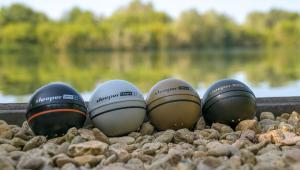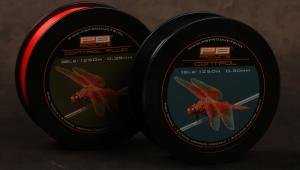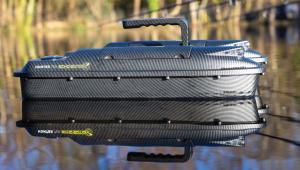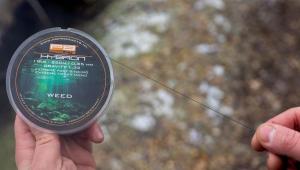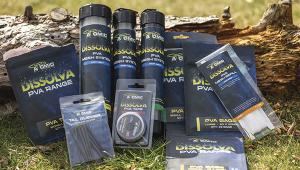13 Top Zig Fishing Tips
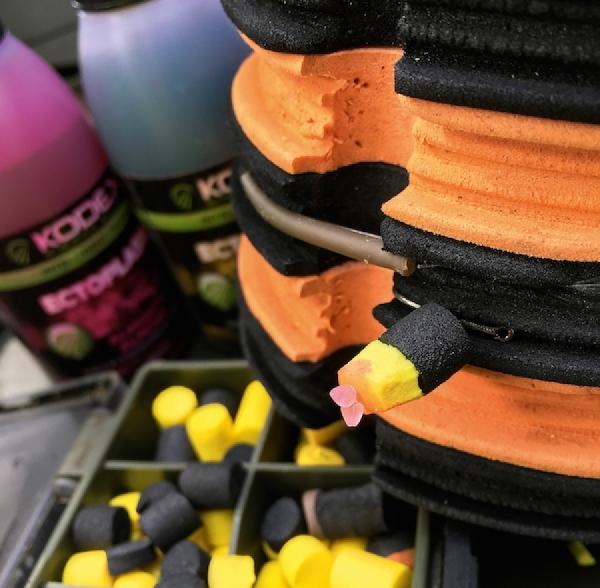
Midlands carp ace LAWRENCE EAST has been enjoying plenty of success using zigs on his local water. Here are a baker’s dozen of ways you can too.
Despite their appearance in plenty of magazine features, DVDs and YouTube videos, zigs still remain a hugely underused tactic. Some people are a little scared of them – as with a lot of things beyond ‘the norm’ – whereas some purists purposely ignore them in favour of more traditional tactics.
However, give them a chance and they have the potential, more than any other tactic, to literally transform your session.
Let’s face it, carp spend the vast majority of their time off the bottom, so why do we insist on fishing for them on the bottom with, at best, a pop-up an inch or two off the deck? It makes no sense, so zigs are definitely the way forward.
Despite being quite weedy, and relatively shallow, I’ve enjoyed a fair bit of success this season on my water and, with these tips and tactics, I’m convinced that you can put a few more carp on the bank yourself.
TIP 01
Try ’Em Close
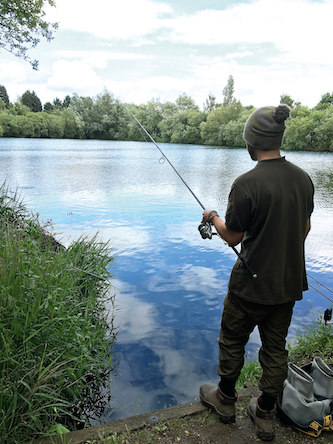
Zigs are not just a long-range tactic, far from it. A carp cruising a foot below the surface a few yards out is the same as a carp doing so at 100-yards range, so don’t be afraid to try a zig rig at shorter range. A bait suspended off the bottom even in the margins can be deadly, particularly when your bottom-bait tactics are not working.
TIP 02
Try This Hook Bait
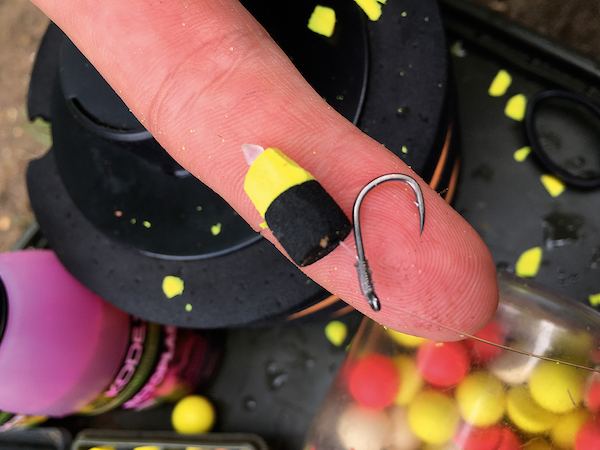
I’ve always been a huge fan of black foam as a hook bait but through various experiments I found that a yellow tip on the bait worked well. However, rather than yellow foam I started using half a yellow trimmed pop-up and it made a huge difference. It’s now my go-to hook bait for zig fishing.
TIP 03
Give Your Baits A Little Boost
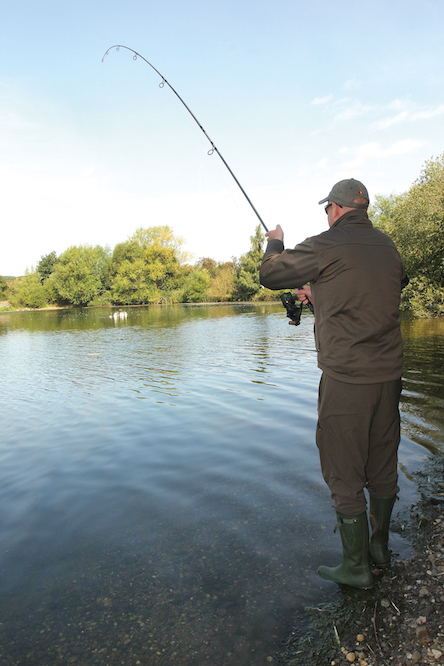
Inevitably likened to another well-known bait extra, only recently I started using this Ectoplasm – the almond version –but enjoyed so much success with it that I now add it to every zig hook bait before I cast out. I’m convinced that it helps but at worst, as Marc Coulson said when he came out to see me for this feature: “It certainly doesn’t cost you any fish.”
TIP 04
Keep It Tight
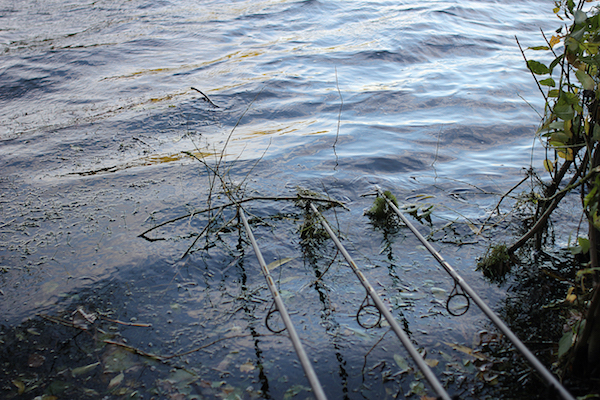
This is a simple tip – always fish tight lines when zigging. Bites are, at best, jittery (although you will get the odd screamer) and a tight line far outscores a slack one here. Besides, your hook bait however many feet above the bottom so line concealment is not really relevant.
TIP 05
Use Foam
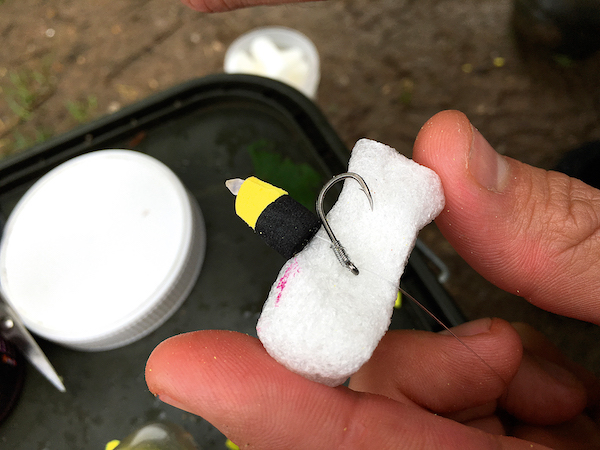
Zigs can occasionally be prone to tangles so the use of dissolving rig foam on the hook can help eradicate this. For short range I use two pieces, removing one for medium-range casting and then removing it altogether at long range because the foam does nothing for the aerodynamics of the rig.
TIP 06
Trap Your Line
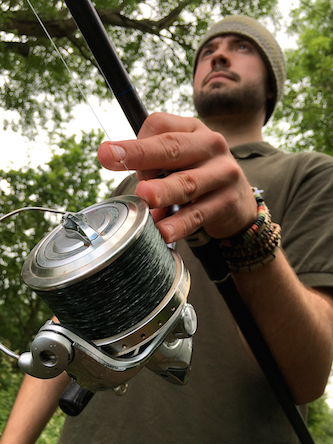
Always, always feather the line by trapping it on the spool before the lead hits the water. This is quite simply to help straighten everything out before it touches down. This will help combat the risk of the long hook link tangling.
TIP 07
Clip-Up!
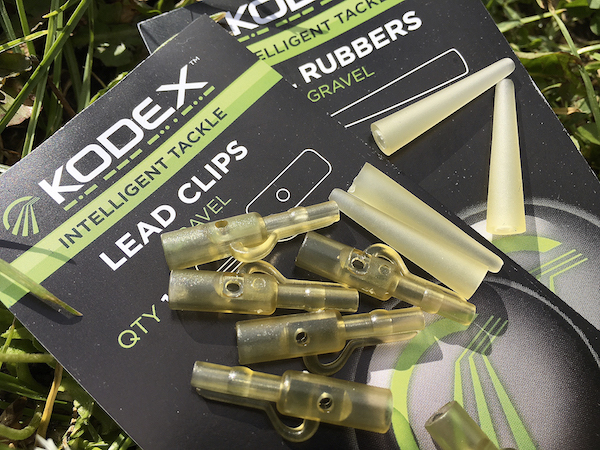
Although I don’t always look to lose the lead while playing a carp, there’s no doubt that with longer hook links this can be a big advantage when it comes to landing any carp that you hook.
I use a lead-clip setup, incorporating a quick-change swivel for my normal bottom-bait fishing. This allows me to instantly switch to a longer hook link in the event that I want to fish a zig, with as little fuss as possible.
TIP 08
Be Ready
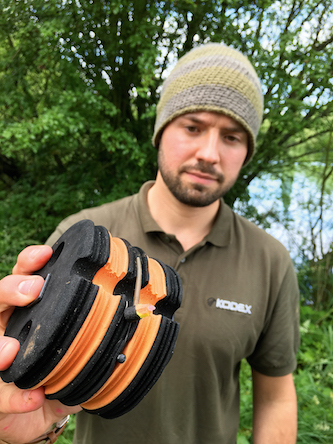
Rather than always tying your zigs on the day, it can save time to keep a few tied up in advance. In this instance I use a Fox Zig Disc (I am not sponsored by Fox at all) to store them. This can be a godsend and real time-saver on any given day.
TIP 09
Choose The Right Tackle
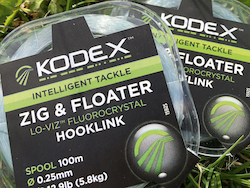
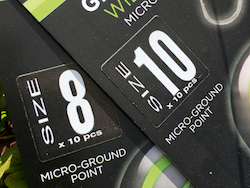
Don’t worry, this isn’t about rods, reels and main lines and I’m certainly not trying to influence you in terms of buying tackle. However, using the right hook link and hooks is vital. I always favour small zig hook baits, so a buoyant line and small hook are vital. I use the Kodex Zig & Floater line and this has been a revelation. Balance the size of hook (always an 8 or 10) and breaking strain of line to the situation you’re faced with and you won’t go far wrong.
TIP 10
Sleeve The Swivel
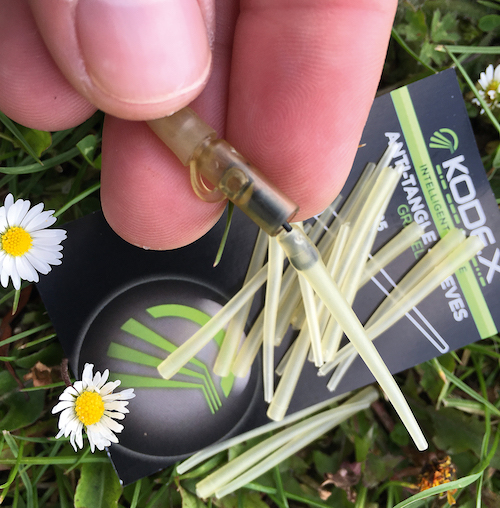
Another tip here to help avoid tangles – incorporate an anti-tangle sleeve into your setup. This sits on the ‘hook’ of the quick-change swivel and helps kick the line out and away from the lead, as well as covering the exposed area of the swivel.
TIP 11
Careful Casting
STEP-BY-STEP
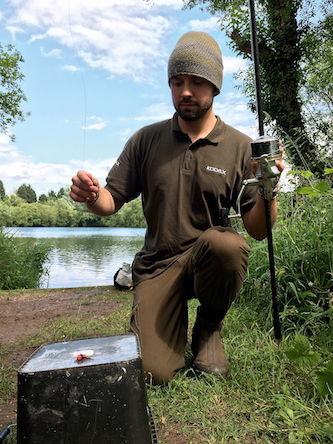
Place the hook bait on to a flat surface, like a bucket lid, base or unhooking mat.
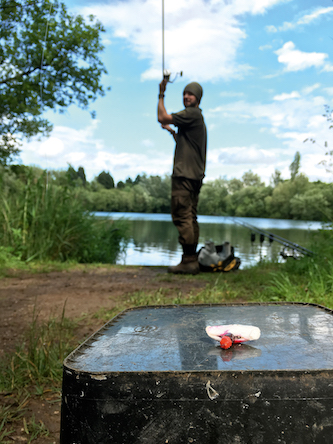
As you move forwards keep watching the bait so it doesn't move on to the grass
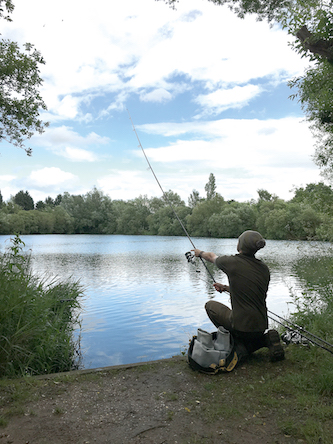
Make a smooth cast and it should all fly out straight and true to your chosen area
There’s no doubt that casting long hook links can be tricky but you can make it a lot easier for yourself by just taking a little care.
A bucket lid or unhooking mat is ideal for laying down your hook bait while you ready yourself. It is vital that you keep your eye on the bait and line while getting ready to flick them out. Pay attention to this to avoid the hook bait moving on to the ground, where it can become snagged.
TIP 12
Gently Does It
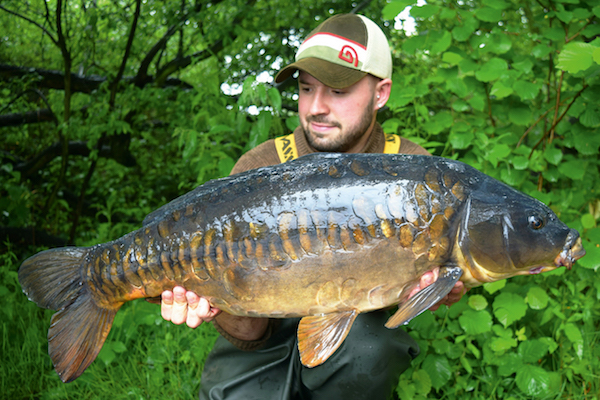
Light lines, small hooks and the longer hook links are not conducive to bullying carp to the net, so take it steady. Don’t rush things, remember that you’re using lighter tackle (on your usual rods and reels – you do not need specialist kit of this nature for zig fishing) and be patient. This will lead to more fish being successfully landed compared to trying to rush them into the net.
TIP 13
Give Depths Some Thought
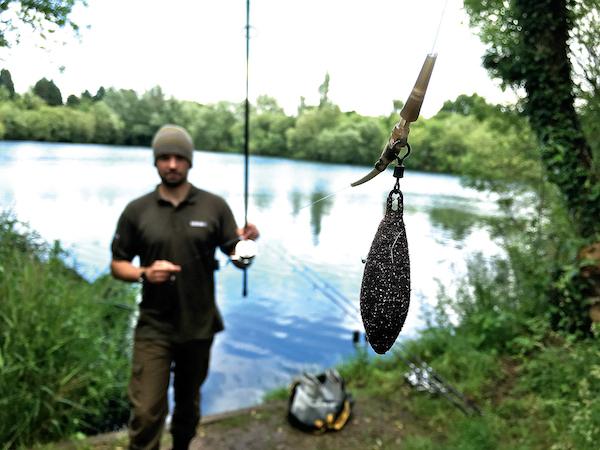
Surely the most common query with zigs is what depth to actually fish them at. The simple answer is to experiment with each rod at different depths until you get a bite, at which point you know what depth the carp are at.
If you know the water that you are fishing, then depths will be easier to assess. On a new water, rather than scare all the fish off with a marker float, learn how to estimate the depth by counting the lead down to the bottom. This might sound tricky, but it’s surprisingly easy to master.
Tip 2 extended - STEP-BY-STEP
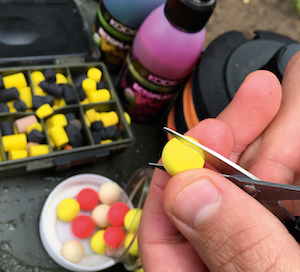
Start by cutting a pop-up bait in half. This is easier with, say, a 12mm or 14mm.
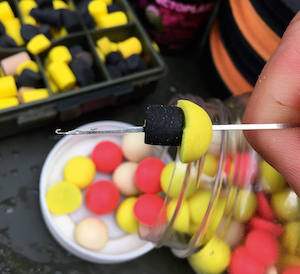
Thread the half bait and a small piece of black, buoyant foam on to a fine baiting needle.
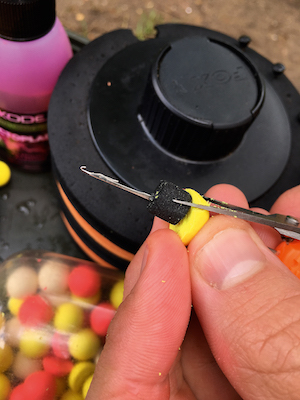
Keep the two baits butted up together on the needle and get your scissors at the ready.
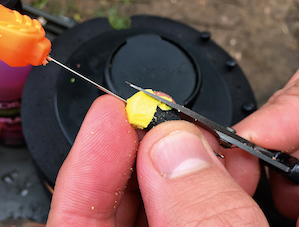
Using your scissors, carefully trim around the boilie until it is flush with the edge of the foam.
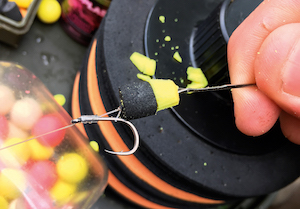
Thread the baits on to your hair, which should be short enough so they're tight to the hook, like so
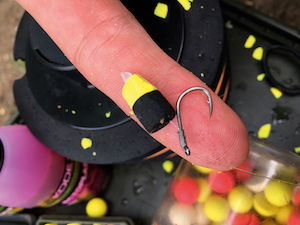
THe finished bait offers buoyancy flavour and sight attraction. Try it next time you go carp fishing!
- Log in or register to post comments





